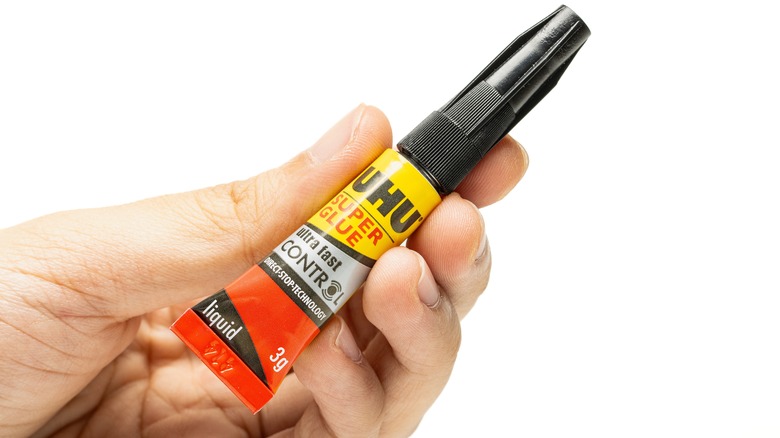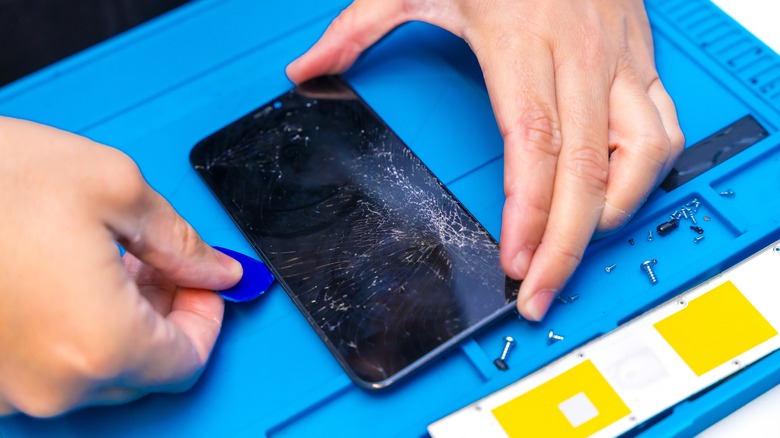Can You Use Super Glue On A Cracked Phone Screen?
A heart-stopping moment that has become quite common nowadays is when your phone slips from your hand and lands face down on the ground. While it won't always lead to damage, there are times when the fall proves to be a screen-altering one, with a spiderweb of cracks visible across the screen when you pick up the device. Even worse is when the entire panel detaches, with just a flexible flat cable connecting it to the body. Googling for remedies might lead you to the most bizarre suggestions, like using WD-40 to fix a cracked phone screen. But this hack has since been debunked as an unfounded claim, possibly to boost the lubricant's supposed "miracle worker" reputation in the auto industry.
Another recommendation that's received a lot of attention online is using super glue, also known as cyanoacrylate, to fix phone screens. At first glance, this would make a lot of sense since it's an adhesive, and piecing together broken glass or attaching the panel to the body would require some type of glue. However, while super glue can technically seal cracks or reattach loose edges, this is actually a risky fix, since the glue can seep into the internal components, such as the speaker, front camera, or sensors, and cause permanent damage to the unit. Even worse, once the super glue hardens, it's nearly impossible to remove without professional tools. So, while this may seem like a more affordable solution than paying to replace a phone screen, it's not recommended.
Why you should skip the super glue (and what to do instead)
Super glue — the product of an accidental discovery during World War II — may be useful in various ways, such as repairing broken items, assembling models, and performing some cosmetic automotive fixes, but it is not designed for use on electronics. There are conductive adhesives built for this purpose. Aside from wearing out when subjected to heat from phone components, super glue can corrode certain materials. Phone displays are packed with sensitive wiring underneath, and you may cause more harm than good if you use super glue to fix a cracked screen.
Cyanoacrylate may leave a cloudy film residue that can ruin your display's clarity and affect its responsiveness. You also run the risk of applying too much glue, causing the excess to squeeze through tiny gaps near components such as the side buttons or the charging port, possibly rendering them useless. Instead of super glue, the best option when your screen breaks is to have it replaced by a professional. Though this may cost more upfront, your phone's guaranteed to look and work as new or close to it. Many repair shops even offer original or OEM parts, and can often fix devices very quickly. If you're on a really tight budget, a good stopgap is to apply a tempered glass screen protector or clear heat-resistant tape over the display's cracks to hold the broken pieces together until you can get the screen replaced.

